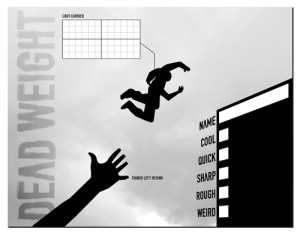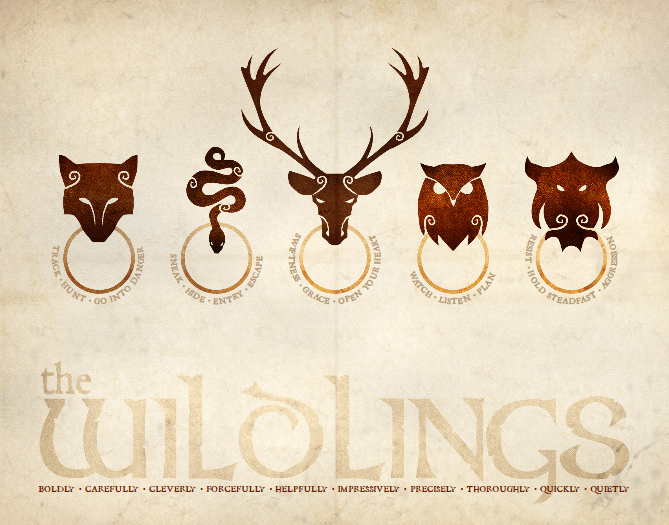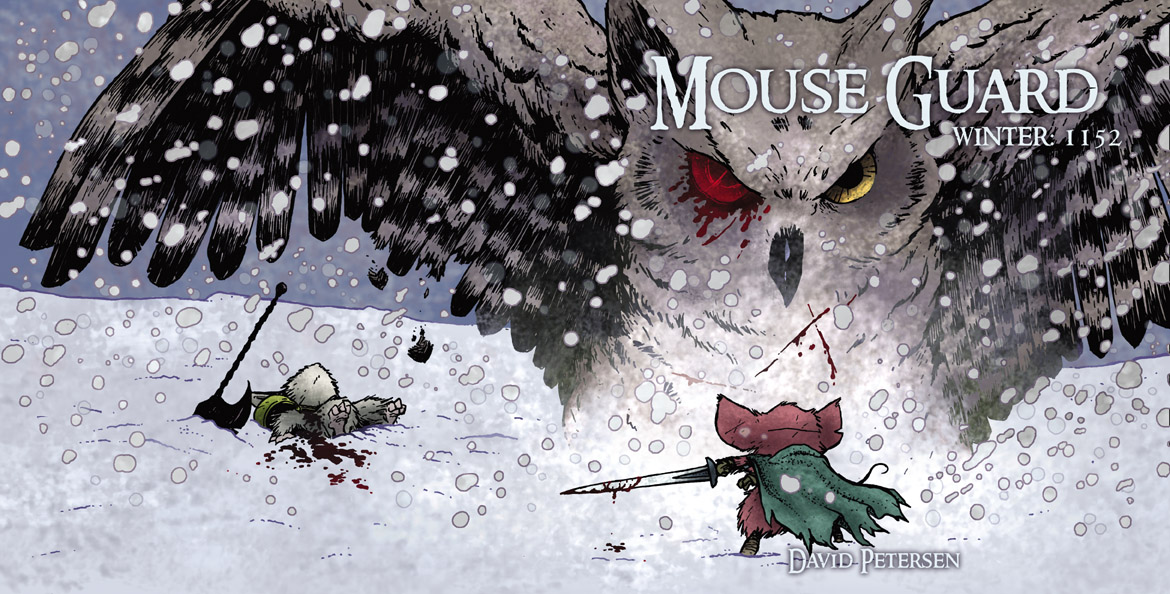 Around this time last year, the #RPGaDAY topic was Coolest Character Sheet. Luckily, I was behind my postings, so I was able to see a bunch of neat character sheets I had forgotten all about. Ross reminded me of Daniel Solis’ (John Harper’s?) character sheet for Dead Weight, which I think is not a completed game.  (Aside: John Harper writes, “Yep, that’s my character sheet design for Dead Weight, actually. Daniel came up with the original concept, and I created the PbtA stuff for it.” It was playtested a few times but never got past early prototyping. Some of the Dead Weight moves can be found in the Apocalypse World book as examples in the hacking chapter.) It’s a parkour game in a zombie apocalypse, and one of the first games based on Apocalypse World. If I recall correctly, that “loot carried†area was supposed to be for coins that represent what your character is carrying. If it doesn’t fit in the box, you’ve got to drop something. ((This would also make Dead Weight one of the few Apocalypse World-driven games that doesn’t have word “World” in the title.))
Around this time last year, the #RPGaDAY topic was Coolest Character Sheet. Luckily, I was behind my postings, so I was able to see a bunch of neat character sheets I had forgotten all about. Ross reminded me of Daniel Solis’ (John Harper’s?) character sheet for Dead Weight, which I think is not a completed game.  (Aside: John Harper writes, “Yep, that’s my character sheet design for Dead Weight, actually. Daniel came up with the original concept, and I created the PbtA stuff for it.” It was playtested a few times but never got past early prototyping. Some of the Dead Weight moves can be found in the Apocalypse World book as examples in the hacking chapter.) It’s a parkour game in a zombie apocalypse, and one of the first games based on Apocalypse World. If I recall correctly, that “loot carried†area was supposed to be for coins that represent what your character is carrying. If it doesn’t fit in the box, you’ve got to drop something. ((This would also make Dead Weight one of the few Apocalypse World-driven games that doesn’t have word “World” in the title.))
Anyway, I should really talk about a game that I actually own.
Oh, there’s the character sheet I made for John Wick’s Shotgun Diaries, which looks just like a small Hello Kitty notebook and contains the character information (and rules) as a journal entry, but I should really look at an official character sheet.
Man. It’s so hard to find a good character sheet that presents the information needed to play a character in a clean, logical way, and is pleasing to look at. There was a character sheet I created for Savage Worlds a few years ago, but there’s so much information needed to be presented on the sheet,  it’s really too dense to follow. Other big games, like Pathfinder, have the game logo as the most prominent thing on the sheet, which naturally draws the eye to the logo. That’s the most important information on the sheet, but it really isn’t.
Wait a sec. While I’ve been writing this up, I’ve been going through my PDFs. Right there, in my John Harper folder ((One of the few in my RPGs folder where we have things saved by designer, not genre.)) , is Wildlings. Look at that sheet. Lots of white space, great icons, what actions the icons are used for, and the ten adverbs for play. A large logo for the game, but that’s not what the eye is drawn to – it’s those icons and those circles. Then you read the game information around the circles, and as you go down, there’s the adverbs you hit after scanning over (and barely registering) the name of the game. It’s a good character sheet.
 I like it.
I like it.
It’s a year later. You still go nuts over John Harper’s stuff?
Oh yeah, he does great layout. Take a look at his site for some neat stuff, like Lady Blackbird and the guys below. Oh, and I’ve got plenty — too many — roleplaying games where the protagonists are thieves, but I still backed his Blades in the Dark Kickstarter campaign at a level where I gained access to his InDesign files. Yeah, $45 so I could get the game and “also get the source files for the game, artwork, handout materials, and all the maps”. Totally worth it. I’ve been able to pull apart the Ghost Lines game to see what tricks he pulled in a three-page game. I can’t wait to see how he put together over 200 pages of material, including a 170(ish) page long form book.



